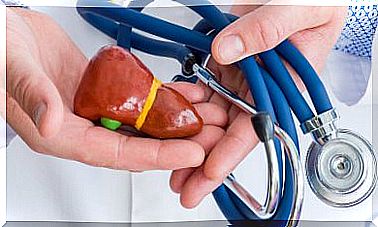Measure The Pulse, How Can It Be Done?
Measuring the pulse can help to diagnose cardiovascular diseases early. In addition, it is a simple procedure that can be done on different parts of the body. How do you do it?

Measuring the pulse is a very useful procedure that allows us to know the rhythm of our heart and guides us on the regularity of its frequency. It is a very simple measure that gives us basic information about our cardiovascular function.
The pulse refers to a series of pulsations that can be felt in some parts of the body. They are due to the contraction and dilation movement of both the heart and the arteries.
It stands for heart rate and is normally expressed in beats per minute. For example, if when measuring a person’s pulse, for 60 seconds, we count 70 beats, it means that the heart beats 70 times in a minute.
Although it is an essential procedure to quickly diagnose a possible heart problem, many people do not know what it is for and how to measure the pulse. Therefore, in this article we explain it to you.
What is the purpose of measuring the pulse?

Measuring the pulse has many uses, since it informs about the number of beats our heart makes per unit of time (normally, per minute). A normal pulse is between 60 and 100 beats per minute.
First, measuring the pulse can help us detect tachycardia or bradycardia. Tachycardia is when the heart beats faster than 100 beats per minute. Bradycardia, on the other hand, is when the heart beats at less than 60 beats per minute.
Both tachycardia and bradycardia can be indicative that something is not working properly in our cardiovascular system. Exceeding any of these limits can pose a certain risk to our heart.
However, most of the time these are normal situations in which the heart adapts its beat to be able to maintain the blood supply to all the organs and tissues of the body.
For example, while doing sports, it is absolutely normal for your heart to race and for your pulse to find a tachycardia. Even the heart can suffer tachycardia in situations of fear, stress or danger.
Similarly, people who train daily tend to have lower-than-average heart rates. Some athletes can have the pulsation even at 40 beats per minute, without being indicative of any pathology.
So what is it for?
This leads us to think that, in the first place, measuring the pulse can be useful to check our physical condition and our progress when we do sports. Also to know what limits we can face during a physical training.
In addition, we must not forget that taking the pulsations can help us to reach the early diagnosis of some pathology. In some serious situations, such as an aortic dissection, a procedure as simple as measuring the pulse can help us detect it early and save the patient.
How do you learn to measure your pulse?

To measure the pulse in normal conditions, the ideal is that you are calm and relaxed, without having previously exercised. So you can get your heart rate at rest.
This procedure can be performed on different parts of the body, but the most normal is to take it on the neck or wrist. In fact, to start measuring the pulse, it is recommended to do it on the neck, since it is the place where it is best perceived.
First of all, you need a stopwatch. You can use a watch or your own mobile to do it. Once you have achieved all this, what you should do, in short, is:
- Place your index and middle fingers under the chin, on the neck. You should press lightly in that area, until you feel the heartbeat. But you shouldn’t do it too hard either, as you could confuse the result.
- Once you’ve found it, start your stopwatch and start counting. You can do it for a minute or for 30 seconds. If you choose this last option, you must multiply the total number of beats you have counted by two.
As we have already mentioned, if the result is between 60 and 100 beats at rest, it is within normal limits. However, if the heartbeat is exceeding or you notice any irregularity in the rhythm, the ideal is that you consult a doctor as soon as possible.
In conclusion
Measuring the pulse is a very simple procedure that serves many purposes of our day to day, such as training. You can do it on the wrist, on the neck, on the abdomen, and so on.
If you have any problem doing it, you can buy a heart rate monitor. Do not forget to consult your doctor if you notice any abnormality or if your heartbeat is usually above average at rest.









